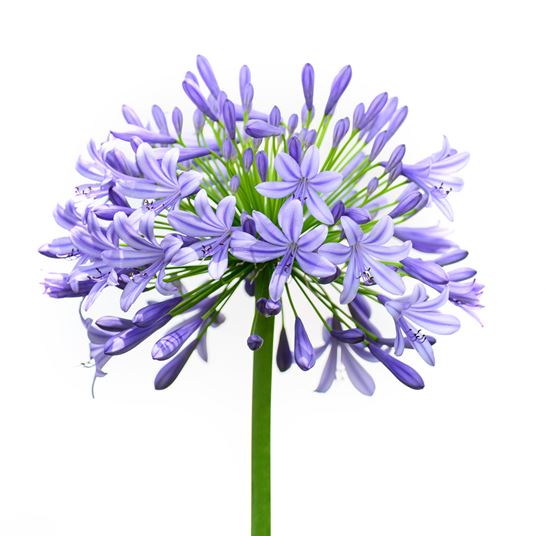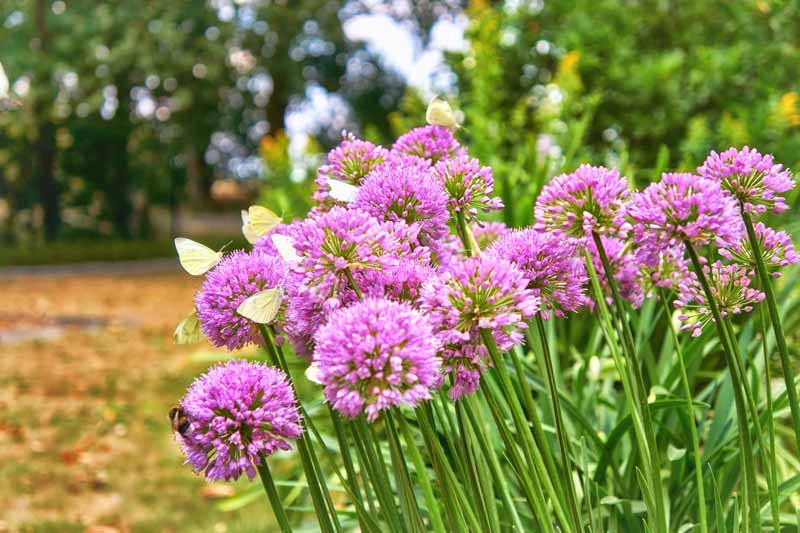Agapanthus Growing Conditions: Soil, Sunlight, and Watering
Agapanthus Growing Conditions: Soil, Sunlight, and Watering
Blog Article
Mastering the Art of Agapanthus Treatment: Crucial Actions for Healthy And Balanced Growth and Lively Flowers
In the world of cultivation, the growing of agapanthus stands as a fulfilling undertaking for those who look for to support these classy blooming plants. With their striking blossoms and elegant foliage, agapanthus has recorded the focus of garden enthusiasts worldwide. Nonetheless, achieving optimum development and lively blooms requires a nuanced method that encompasses various vital steps. From picking the appropriate selection to grasping pruning techniques, the journey in the direction of cultivating growing agapanthus plants is multifaceted and holds the key to opening the full possibility of these agricultural treasures.

Selecting the Right Agapanthus Selection

When choosing the right Agapanthus variety for your yard, take into consideration variables such as climate viability, flower color, and development behavior. Agapanthus, generally called Lily of the Nile or African lily, can be found in a range of shades varying from tones of purple and blue to white. Choose a bloom shade that matches your existing yard combination to produce an unified landscape. Additionally, think about the climate in your region to guarantee the Agapanthus range you pick can thrive in your particular conditions. Some selections are much more tolerant of chilly temperatures, while others choose warmer environments. Comprehending the development behavior of different Agapanthus selections is crucial for proper placement within your yard. Some varieties have a clumping development practice, perfect for containers or boundaries, while others have a more dispersing nature, suitable for ground cover or mass growings. By thoroughly evaluating these variables, you can choose the best Agapanthus selection to enhance the elegance of your yard.
Perfect Growing Conditions
Taking into consideration the ideal ecological demands is essential for successful Agapanthus farming. Agapanthus grows in well-draining soil with a somewhat acidic to neutral pH degree. When planting, choose a location that obtains full sunlight to partial color. In hotter environments, providing some mid-day color can stop scorching of the leaves. Agapanthus plants are sensitive to chilly temperature levels and must be secured from frost throughout cold weather.
To guarantee healthy growth and vivid flowers, plant Agapanthus light bulbs at a deepness of about 2-4 inches and space them 8-12 inches apart. Mulching around the base of the plants assists preserve dampness and reduces weed growth.
Watering and Feeding Tips
Keeping appropriate dampness levels and providing vital nutrients are essential aspects in the care regimen for Agapanthus plants. It is essential to strike a balance when it comes to sprinkling Agapanthus. These plants choose constantly damp soil but are susceptible to root rot if overwatered. Throughout the expanding period, water deeply as soon as a week, ensuring the dirt is well-draining to avoid waterlogging. In hotter environments or throughout durations of dry spell, even more constant watering may be essential to maintain the soil equally moist. Nevertheless, lower watering in the wintertime to stop water logged problems.
Fertilizing Agapanthus is essential for promoting healthy and balanced development and respected blooms. Use a balanced plant food, such as a 10-10-10 formula, in the early spring as new growth arises. By complying with these watering and feeding suggestions, you can ensure your Agapanthus plants thrive and generate vibrant, long-lasting flowers.
Pruning Techniques for Agapanthus
Pruning Agapanthus plants at the appropriate times and with correct techniques is critical for preserving their wellness and advertising optimal growth and blooming. The excellent time to prune Agapanthus is in late winter season or early spring before brand-new growth arises. Beginning by eliminating any type of dead or yellowing leaves near the base of the plant. Cut them as close to the ground as possible without damaging the arising shoots.
Deadheading invested flowers can also redirect the plant's power right into producing more blossoms more information rather than setting seeds. If you desire to collect seeds for breeding, leave some flowers to mature and completely dry on the plant.
Bear in mind to utilize clean, sharp devices to make exact cuts and minimize the risk of presenting illness. Agapanthus. Routine trimming will certainly aid keep your Agapanthus looking neat and healthy while making sure an abundant display screen of attractive blooms
Managing Usual Bugs and Illness
After guaranteeing correct pruning techniques for Agapanthus, it is necessary to deal with typical bugs and diseases that can impact the wellness and vigor of these plants. Agapanthus plants are typically hardy however can still drop target to certain problems. One common insect that affects Agapanthus look these up is the Agapanthus look at this website gall midge. This small, orange fly lays its eggs in the foliage, leading to distorted growth and flower buds that fail to open up. To battle this pest, prune and destroy any afflicted plant components and take into consideration making use of insecticidal soap.
One more typical issue is fungal leaf place, which presents as dark sores on the fallen leaves. To avoid fungal conditions, make certain excellent air flow around the plants, prevent overhanging watering, and remove any infected fallen leaves immediately. Furthermore, Agapanthus plants can struggle with root rot if they are planted in badly draining pipes soil. To avoid this, plant Agapanthus in well-draining dirt and prevent overwatering. By being cautious and taking punctual action against diseases and pests, you can aid your Agapanthus plants prosper and produce lively blooms.

Verdict
In verdict, mastering the art of agapanthus care involves choosing the ideal selection, giving ideal planting conditions, appropriate watering and fertilizing, suitable pruning strategies, and attending to typical bugs and illness. By complying with these necessary steps, you can ensure healthy development and vivid blossoms for your agapanthus plants. Remember to routinely keep an eye on and preserve your plants to promote their general health and durability.
To make sure healthy growth and vibrant blooms, plant Agapanthus bulbs at a deepness of regarding 2-4 inches and space them 8-12 inches apart. By following these watering and feeding suggestions, you can guarantee your Agapanthus plants prosper and produce vibrant, durable flowers.
One common pest that impacts Agapanthus is the Agapanthus gall midge. Additionally, Agapanthus plants can suffer from origin rot if they are planted in poorly draining pipes dirt. By complying with these necessary steps, you can ensure healthy and balanced growth and dynamic blooms for your agapanthus plants.
Report this page